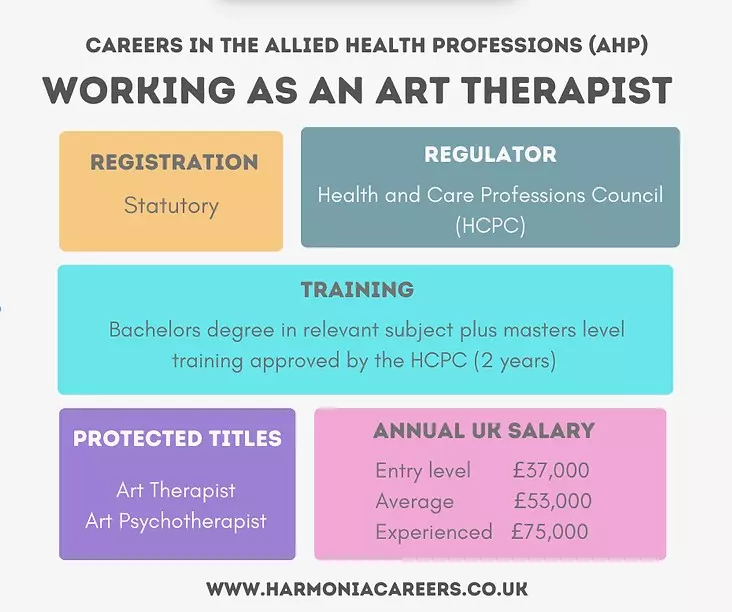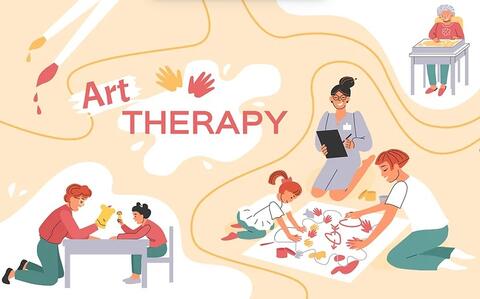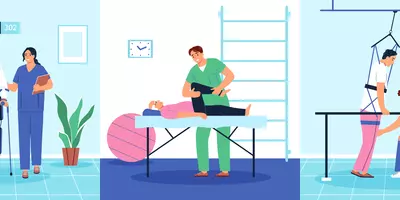
26 Mar 2025 ● Harmonia Careers
How to become an Art Therapist
Art therapy provides a unique way for people to express their emotions and experiences, fostering healing and personal growth.
Art can serve as a non-verbal means of communication, especially for those who struggle to articulate their feelings verbally, and allows both the therapist and client to engage in creative processes, making therapy more accessible and enjoyable.
Working in this field can be deeply rewarding, as therapists witness the transformative power of art in their clients' lives.
Find out what it takes to train and work as an art therapist in this easy-to-read guide.
"Schools are increasingly using art therapy to help children understand and express their emotions, develop self-esteem and self-awareness, and cope with stress and worries. A 2019 survey by the British Association of Art Therapists (BAAT) found that 68% of its members worked with children and young people, with 35% in schools."

What is Art Therapy?
Art therapy is a type of psychotherapy that uses creative expression alongside traditional talking therapy to help individuals explore and regulate their emotions, improve mental health, challenge existing beliefs, improve coping skills, and enhance overall wellbeing.
Through various art forms, such as painting, drawing, and sculpting, participants can communicate feelings that may be difficult to express verbally.
Art therapy sessions can take place individually or in groups. Art therapists use art as a primary mode of communication, alongside talking, and can support people of all ages, abilities, and stages of life.

How to become a qualified Art Therapist
There are many entry routes into an art therapy training course but as it is a post-graduate training course, you will need to have a bachelor's degree (or equivalent level 6 qualification) in visual art, art and design, or another profession with relevant experience such as being a qualified teacher, social worker, or psychologist.
Regulation
To practice as an art therapist the UK, you must be registered with the Health and Care Professions Council (HCPC), which holds a public register with the Professional Standards Authority (PSA).
Art therapy is a statutorily regulated profession and in the United Kingdom only those persons who are appropriately qualified and registered by the Health and Care Professions Council (‘HCPC’) and may legally describe themselves art therapists or art psychotherapists. These two titles are both protected by the HCPC and may be used inter-changeably by individual Members as they describe the same practice. Full Membership of the Association is only open to registered art therapists and art psychotherapists. Other professionals and Members of the public may join as Associate Members and are not bound by this Code of Ethics.
Training
You will need to complete a Masters level training course approved by the Health and Care Professions Council (HCPC). The training combines theory and practical work, and can be completed over two years full-time or three years part-time.
Professional Registration
In addition to registering with the HCPC, you might want to join a professional membership body for support with professional development, networking, support, and access to resources.
The professional membership organisation for art therapists in the UK isthe British Association of Art Therapists.
Workplace settings for art therapy
Depending on the client's needs, you may work one-to-one with a client or in group setting. You may also work with other professionals, such as medical and health care staff, teachers, or prison and probation staff.

Here are some common workplaces:
- Hospitals; including cancer treatment centres, psychiatric facilities, or hospice care.
- Schools; including primary, secondary, further, and special education.
- Mental health services or rehabilitation facilities; where you may work with some of the most difficult-to-reach patients.
- Prisons, social services, care homes and day centres
- National and local charities
- Private clinics
- Wellness centres
Career Progression
Although therapists use art as a primary mode of expression and communication through creative activities such as - drawing, painting, creating mandalas, doodling and scribbling, finger painting, photography, making collages, sand play, sculpture, and puppets - they work with people of all ages who may have a range of difficulties, including emotional, behavioural, or mental health problems, learning disabilities, or life-limiting conditions.
Art therapy specialisms are based on different client groups and therapeutic approaches. Some common specialisms include:
- Child art therapy
- Adult art therapy
- Trauma-focused art therapy
- Group art therapy
- Art psychotherapy.
Alternatively, once you have more experience, lecturing or teaching art therapy techniques to others can be incredibly rewarding as you to share your knowledge with new therapists.
In summary
Pursuing a career in art therapy can be highly rewarding. Here are several reasons to consider this path:
- Emotional Healing: Allows individuals to express their emotions creatively, facilitating healing and self-discovery
- Holistic Approach: Combines psychological principles with artistic expression, addressing both mental and emotional wellbeing.
- Diverse Clientele: Art therapists work with a variety of different people, including children, adults, and those with special needs, making the work diverse and fulfilling.
- Creative Expression: You can use your own creativity to help others, making the work personally satisfying.
- Competitive Pay: Good entry-level salary, reflective of the education and registration required to practice.
- Flexible Work Environment: Art therapists can work in various settings, including schools, hospitals, and private practices.
- Growing Field: As awareness of mental health issues increases, the demand for art therapists continues to grow.
With proper qualifications, emotional intelligence, and a dedication to learning, you can significantly impact your clients' lives as an art therapist.




